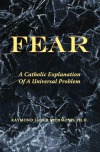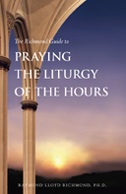|
|
|

Mass
The Divine Liturgy
Our help
is in the name of the LORD
Who made heaven and earth. |
—Psalm
124 : : 8 8
|
 |
Indifference |
An Obligation, a Duty, a Habit |
Something Real |
Reason to Rejoice |
The Desire to Love |
Worship |
Faith and Love |
Abuses |
Be Not Afraid |
Graffiti in the Church |
Conclusion: Self-deceived

 ADLY
, many of those who go to church are
trying primarily to feel good about themselves, and they often treat
the Blessed Sacrament and the sanctity of the church environment with casualness,
if not outright carelessness. They don’t receive the
Blessed Sacrament, they take it for granted. They partake of the Eucharist
out of habit and guilt. Worship for them isn’t an expression of
true love,
and it doesn’t arise out of an ardent desire
to sacrifice everything and
suffer anything to live a holy life. ADLY
, many of those who go to church are
trying primarily to feel good about themselves, and they often treat
the Blessed Sacrament and the sanctity of the church environment with casualness,
if not outright carelessness. They don’t receive the
Blessed Sacrament, they take it for granted. They partake of the Eucharist
out of habit and guilt. Worship for them isn’t an expression of
true love,
and it doesn’t arise out of an ardent desire
to sacrifice everything and
suffer anything to live a holy life.
|
Christ’s
sacrifice on the cross for our sake was met with indifference, ingratitude,
and contempt, even by His own people. So should it be any surprise that today
the celebration of the holy Eucharist is met with
indifference, ingratitude, and contempt, even
by His own anointed? |
|
An Obligation,
a Duty, a Habit
To many Catholics, attending church
is an obligation, something of a duty, a habit—maybe even a burden
carried for the sake of guilt—that we might prefer to avoid in order
to enjoy other things more immediately pleasant
and satisfying. Some of this problem derives from the fact that the Church
herself even states that we have an obligation to attend church on Sundays and
Holy Days of Obligation; it’s written in the
Precepts of the Church.
But when the Church speaks like this, the intent is to help us understand
the bare minimum of what constitutes a Christian
life. It’s a bit like specifying the minimum ingredients—flour
and water, for example—needed to make bread. Or it’s like
saying that some sort of fluid intake is a necessary minimum to sustain
life.
But when you are told these
things, they often seem like abstract and dull rules.
If, however, you were lost in
a desert, dying of thirst, you would drag your body through hot, burning
sand to reach a water hole. Water, in that case, would be no abstraction.
It would be real.
|
Have you ever
read news reports about big snow storms and how churches cancel services
because travel is too dangerous? Yet people will still flock to football
games and shopping malls in that same, dangerous weather. Now, when people
would cancel Mass but go to a sporting event, it isn’t very difficult
to determine what they believe to be most real and precious in their lives,
is it? |
|
Something
Real
Well, instead of thinking about
the Eucharist as an obligation, think of it like water in the desert, something
real. In the Body of Christ
you have Faith; you literally see the Father because “when you
see Me you have seen the Father.” In the Blood of Christ you have Love,
because what greater love is there than to shed your
blood for another?
What greater reason is there
to rejoice?
Reason to
Rejoice
In fact, if we look at the Easter
Exultet from the traditional Latin Mass, we can see that the angelic choirs of
heaven have reason to rejoice at every divine liturgy for the same reason they
rejoice at the Easter Vigil:
• |
that the darkness
of the world is scattered; |
• |
that wickedness is
put to flight; |
• |
that sin is
cleansed; |
• |
that innocence to
the fallen is restored; |
• |
that gladness is
given to the sorrowful; |
• |
that hatred is driven
forth; |
• |
that concord is
prepared; |
• |
that haughtiness
is bent down; |
• |
that heavenly things
are united to those of earth and things divine to those which are of
man. |
Once you see the reality of
the Eucharist, rather than an abstract obligation, something will change.
Instead of feeling pushed into doing something, you will feel
drawn to your deepest desire. There is
a big difference there. When we’re pushed, we either dig in our heels
and resist or we become passively aggressive
through laziness. That’s human pride. But
when we desire something we would fly, if we could, to get to it. That’s
what Catholic mysticism is all about. It’s the desire for holiness.
It’s the desire to love.
The Desire to
Love
You have within your heart the
desire to love, but it has somehow been buried under
fear because of what was lacking in your own childhood.
When you were a child, abstract and dull rules were imposed on you, and you
were left feeling empty and lazy. You did not experience religion as a matter
of real love. Now, by the grace of God, you have the opportunity to embrace
your faith and rediscover the love that God gave
you in the beginning but that languished because it wasn’t watered
properly. The rediscovery of that love begins
with genuine worship.
Worship
The liturgical work of joining
our lives to the sacrifice of Christ is called worship, and worship
far transcends mere spirituality. Many persons today
who do not even believe in God call themselves “spiritual,” but
when we join with Christ’s sacrifice on the Cross, we give meaning to
our constant sacrifices for the souls of others.
Christ’s Passion and death made it perfectly clear that suffering sacrifice
is the only way to crack open the hardened free will
of the human heart. So when we freely suffer for the sake of other souls,
we contribute to paying the mystical price of their
repentance. Even angels cannot do such majestic
work!
|
 |
If angels were
capable of envy, they would envy us for two things: one is the receiving
of Holy Communion, and the other is suffering. |
|
|
—Saint Faustina,
Diary, 1804 |
|
Faith and
Love
 Keep
in mind that the Body of Christ is faith, and the Blood of Christ
is love. Therefore, to take Communion worthily (1 Corinthians
11:27) [1]
does not mean only that you must be free from mortal sin and able to receive
graces in pure faith. It also means that you
must be willing to “pay the price” of receiving Christ within you.
And what is that price? It is the willingness to make the personal sacrifice
of shedding your own blood—that is, to stop defending your
pride and personal pleasure—so as to
love others according to the Way of the Cross,
in perfect sacrifice. Only in this way can you receive Christ’s love
worthily. Keep
in mind that the Body of Christ is faith, and the Blood of Christ
is love. Therefore, to take Communion worthily (1 Corinthians
11:27) [1]
does not mean only that you must be free from mortal sin and able to receive
graces in pure faith. It also means that you
must be willing to “pay the price” of receiving Christ within you.
And what is that price? It is the willingness to make the personal sacrifice
of shedding your own blood—that is, to stop defending your
pride and personal pleasure—so as to
love others according to the Way of the Cross,
in perfect sacrifice. Only in this way can you receive Christ’s love
worthily.
|
When Jesus told
Peter that “the spirit is willing, but the flesh is weak” (Mark
14:38), He said this as a warning, not as an excuse. In speaking to Peter,
He speaks to all of us. Unless we discipline ourselves with fasting and
sacrifice, we will fail to reach deep enough within ourselves to overcome
the unconscious anger and
fear that leads us into
disobedience. Without disciplined sacrifice,
all those pious words on our lips won’t do very much at all to help
us attain the holiness we think we
want.
Remember also
that Christ warned us that worship must be an act of genuine love: “I
tell you, unless your righteousness surpasses that of the scribes and Pharisees,
you will not enter into the Kingdom of Heaven” (Matthew
5:20). |
|
Therefore, understand that the
Blessed Sacrament is sacred and that we should partake of it with
due reverence. It might seem to you that neither God nor
others care about what you do or wear at church, but every act of irreverence
will be accounted for at your final judgment. Better to correct things now,
while you have the chance, rather
than pay for it all later.
1. |
Maintain a general
attitude of sacred silence in the church. If you have to communicate with
someone, speak only in a reverent whisper. |

2. |
When you enter or leave
the church, face the Tabernacle and
genuflect [2a]
before the Blessed Sacrament. Also, whenever you walk from one side of the church
to the other, face the Tabernacle and genuflect as you cross before it. |
3. |
Fast (i.e., abstain
from food) for at least an hour before receiving holy Communion, according to
Canon law (Can. 919 §1). And for that matter, fast for an hour after receiving.
It’s admirable to not send Christ into a pit of half-digested food, but it
is just as admirable to not pour garbage (such as coffee and donuts) on
Him. |

4. |
In the Roman rite, receive
the Eucharist kneeling, on the tongue [3], and
only from the hands of a priest (or deacon) and never from a lay person. |
6. |
Wear
modest dress clothing. For both men and women, jeans,
sneakers, shorts, casual shirts, shirts or jackets with sports or political insignia, and visible
tattoos [4]
are grave defilements of reverence. For women in particular, leggings, pants, short skirts,
bare shoulders, and low necklines are all grave defilements of reverence. |

7. |
It is admirable and
beneficial for women to cover their
heads,[5]
but let it be a real “veil,” such as a stylish scarf over the head
and shoulders, rather than a doily precariously balanced on the top of the
head. Similarly, a cropped lace “veil” that exposes the back of your head fails
in the true function of a veil. For the same reason, a hat is not liturgically
appropriate.

|

|

|
A chopped veil that
falls short as a proper veil. |
A good lace veil that
covers the back of her head and neck. |
An elegant use of a scarf
as a chapel veil. |
|

8. |
Arrive before the
formal liturgical greeting by the priest, and do not leave before the
dismissal.[6]
Anything less than this makes a mockery of your lay obligation to
assist [7]
at the liturgy. Moreover, if you really loved God, you would not receive
Communion if you arrive
late.[8] |
|
Protestants say
that their Communion is just a symbol. Well, they’re right. Just as
Melchizedek’s offering of bread and wine was a symbol of Christ’s
sacrifice of His Body and Blood, the Protestants’ “Communion”
is a symbol—a symbol of the real sacrifice of the Catholic
Eucharist. |
|
Abuses
In regard to liturgy, the Traditional
Latin Mass and the Eastern Catholic liturgies preserve a reverent environment well
suited to nurturing love. The language, the music, the incense, and the liturgical actions
of the priest(s), server(s) and the congregation all combine to focus human
action into an act of love. Although the Novus Ordo has this potential as
well, the new order of the Mass is also open to abuse. The real division
between the traditional and the modern concerns reverence, or, more technically,
conservatism.
A conservative—a true
conservative—seeks to conserve respect for the divine mystery of
Christ’s Incarnation and Passion that is behind every liturgical action
of the Catholic Church. Thus, the Novus Ordo can be offered
conservatively, and there are places—though they may be hard to
find—where it is offered conservatively.
You may have to travel quite
a distance on Sundays to find a conservative Mass, but you may not have the
time for extensive travel on weekdays. Therefore, if you have to go to a
liberal parish, then, instead of putting money into the collection, leave
a note of warning.
|
When I attend Mass
here, I will not support this parish financially as long as you
do any of the following:
|
• |
Use female altar servers |
|
• |
Use extraordinary ministers
of Holy Communion in non-extraordinary circumstances or refer to them as “Eucharistic
ministers” |
|
• |
Fail to maintain a general
atmosphere of modest reverence for the sacred environment, especially when women serving
as lectors or ushers wear slacks or jeans instead of modest skirts |
|
• |
Alter the liturgical texts
or disobey the rubrics |
|
• |
Make the homily into joking
entertainment |
I will give my monetary support
only to those who defend and teach the true faith and who respect the holy mysteries of the
divine liturgy. |
This isn’t being
judgmental, it’s a matter of giving a legitimate warning
about abuses.
|
The psychological
idea behind all abuses is to “dumb down” the Mass so that anyone,
even a child, can understand it; the unwitting consequence of this is that
no one, not even a child, can take the Mass seriously. |
|
Be Not
Afraid
So do not be
afraid. Commune with God in ways that even angels
cannot. Remain steadfast in the Faith, and do not
become angry with the sins of others, but think of
the mercy that awaits them, if only they would
repent their sins and accept God’s mercy. And then
pray and make
sacrifices that they do accept it.
Pray, and make
sacrifices. |
—The Blessed
Virgin Mary,
Fátima, 1917 |
Graffiti
One day, after a Mass at which I had
been serving as altar server and MC, a woman approached me, showed me a photograph
on her cell phone, and said, “Look at this. They painted graffiti on the wall of
the church outside. Someone should do something about this.”
Yes, I thought. But what about the
graffiti within the Church? What about the women who refuse to wear a
chapel veil? What about the women who refuse to wear skirts
or dresses in the church? What about the men who refuse to wear dress clothes in the
church? What about the women and men who refuse to receive the Eucharist on their
tongues, rather than in their hands? Well, you can do something about that. You can
refuse to be graffiti in the Church like them.
Conclusion:
Self-deceived
In the end, no matter what prayer
and liturgical practices you follow, if they are not leading you to love
God with all your heart, all your soul, all your mind, and all your strength; if
they are not leading you to exemplify the fruits
of the Holy spirit; if they are not leading you to forsake the
world and
its enticements; if they are not leading you to
live a chaste and modest
lifestyle; and if they are not leading you to treat others with
forgiveness and
compassion, then, to borrow an expression from
Saint James, you are self-deceived.
  The
Holy Mass explained to Catalina by Jesus and Mary The
Holy Mass explained to Catalina by Jesus and Mary

Notes.
1. “Therefore whoever eats the bread or drinks
the cup of the Lord unworthily will have to answer for the body and blood
of the Lord.” For more information about documented and authenticated
Eucharistic miracles, see
Eucharistic
Miracles from The Real Presence Association.
2a. See Peter Elliot’s definitive text,
Ceremonies of the Modern Roman Rite (San Francisco: Ignatius Press,
1995), §336. A genuflection is a sign of adoration due to God.
To make a proper genuflection, keep your back straight, bend your left leg,
and touch your right knee to the floor. Note that a curtsy is just a timid,
half-hearted attempt at a genuflection. Note also that a bow, in the Roman rite
(unlike the Eastern rites), is simply a sign of respect,
as would be given to another person; to bow, rather than to genuflect (or
kneel), before the Blessed Sacrament is to give the appearance of
“respecting” Christ while secretly denying His sacred presence.
2ab. See Peter Elliot’s definitive text,
Ceremonies of the Modern Roman Rite (San Francisco: Ignatius Press,
1995), §336. A genuflection is a sign of adoration due to God.
To make a proper genuflection, keep your back straight, bend your left leg,
and touch your right knee to the floor. Note that a curtsy is not a genuflection.
Note also that a bow, in the Roman rite, is simply a sign of respect,
as would be given to another person; to bow, rather than to genuflect (or
kneel), before the Blessed Sacrament is to give the appearance of
“respecting” Christ while secretly denying His sacred presence.
It’s true that the norm in the US is to bow
before receiving Communion. And, I will add, it’s also true that the
norm in the US is that most Catholics don’t have a clue as to what
Christianity really is, and that many so-called Catholics are in a perpetual
state of unrepentant mortal sin. So, if
you want to join the spiritual battle against the impending persecution that will
sweep away much of the true faith, then fight against the norm of ignorance and apathy
that surrounds you now in the Church itself. Therefore, adore Christ by kneeling
to receive Him. (Reception of Communion while kneeling is protected by church law; see
Redemptionis Sacramentum, 91).
3. This is not an issue in the Eastern rites because
of the universal practice of intinction (dipping the host into the
Precious Blood, with reception in the mouth), but all Roman Catholics have
the right to receive the host on the tongue (see
Redemptionis Sacramentum, 92 and
GIRM, 161). This right cannot be legally denied,
even in the flu season, and any priest who denies you does so illicitly and
thereby commits a grave sin. (If any priest consistently tries to force you
to receive in the hands, then start wearing gloves. Every priest knows that
reception of the host in gloved hands is absolutely forbidden.) It is also
illicit to be denied Communion for kneeling (see
Redemptionis Sacramentum, 91).
Furthermore, in regard to sanitation, it is more sanitary
to receive the host on the tongue that to receive the host in your hands.
Keep in mind that by the time for Communion your hands have been subject
to far more bacterial and viral contamination than the hands of the priest.
Plus, a good priest will not even touch your tongue when giving Communion.
As for “extraordinary ministers of Holy Communion” (see Redemptionis Sacramentum, 154-160), well, what’s
the point of your not touching the host with your hands if you are willing
to receive communion from the hands of a layperson stained with hidden lust and
unconscious anger? Yes, even priests are stained with
hidden sins, but you are protected from the sins of a priest by virtue of his
ordination.
4. If you have a tattoo
that you acquired in a time of spiritual ignorance, then, to prevent the
sin of giving scandal to others, cover it in sorrow for having desecrated
your personal temple of the Holy
Spirit.
5. When a woman refuses to cover her head
in prayer, she also refuses to take seriously the spiritual battle with evil—and
that’s a sad thing for her and for the entire Church as well.
6. “Eating and running” is a social
blunder that can get you barred from future dinner invitations. Do you think
that it offends Christ any the less?
7. See Can. 1247
and 1248.
8. You are obligated by Church law to receive
holy Communion only once a year (see
Can. 920 §1); partaking of the
sacrament of the Eucharist more than this minimum is optional. Therefore,
refraining from receiving holy Communion when you have not been able to prepare
yourself properly (e.g., in quiet meditation before Mass begins) would be
of greater honor to Christ than receiving Communion as a formality simply
because you managed to get there “before it was all over.”
Additional
Resources
Eucharistic Miracles
from The Real Presence Association.


Healing
|
Though
Demons
Gloat
|
Anger
&
Forgiveness
|
Falling
Families,
Fallen Children
|
Disasters
and
trauma
|
Psychology
from the
Heart
|
 |
 |
 |
 |
 |
 |
Psychological Healing
in the Catholic Mystic tradition |
True Christian
Identity
In Confronting
Evil |
How to Turn the
Emotional Wounds
of Daily Life Into
Psychological Growth. |
The Psychological
and
Spiritual Remedy
For Our Cultural
Disintegration |
The Struggle For
Psychological
and Spiritual
Growth |
Collected Texts
About the Spiritual Depth of
Clinical Psychology |
More information |
More information |
More information |
More information |
More information |
More information |
Desire
and
Distraction
|
Fear
|
Stopping
Smoking
|
Borderline
Personality
Disorder
|
Catholic
Compassion
|
 |
 |
 |
 |
 |
A Catholic Perspective
On Behavioral Change
and Its Subversion |
A Catholic Explanation
Of a Universal
Problem |
Through
Faith
and
Prayer |
Healing
the
Rage |
When They Tell You
That the Moral Teachings
of the Catholic Church
Are Wrong |
More information |
More information |
More information |
More information |
More information |
|

![]() Learning to Pray | Modesty | Confession | Scruples | Reading the Bible | Spiritual Fruits | About CSF
Learning to Pray | Modesty | Confession | Scruples | Reading the Bible | Spiritual Fruits | About CSF






















